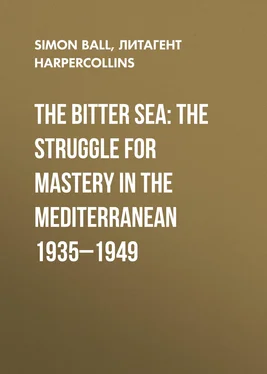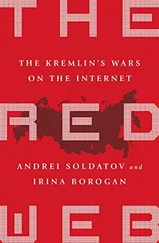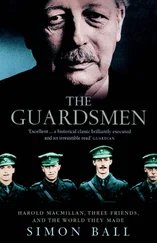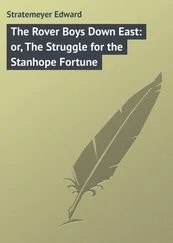Most ships did not divert to Cyprus. They travelled on for another thousand miles from Malta. At Port Said they entered the Suez Canal. A great feat of nineteenth-century engineering, the Canal ran for 101 miles through Egypt, providing a single-lane highway, with passing places to accommodate both north-and southbound traffic. A ship would take–on average–fifteen hours to pass through the Canal before debouching into the Red Sea at Port Suez.
Thus for the British the Mediterranean comprised a seamless whole. The sea was a journey from west to east, and the Mediterranean coast comprised the north and south banks of an eastward-flowing river. 13

By the time ‘major combat operations’ in Abyssinia ended on 9 May 1936, the British had been thoroughly spooked. 14 They could no longer ‘despise the Italians and believe they will never dare to put to and face us’, wrote Winston Churchill. ‘Mussolini’s Italy may be quite different to that of the Great War.’ 15 Major-General Robert Haining, the British army officer charged with assessing his Italian opposite numbers, described the campaign as a ‘masterpiece’. ‘There has been a great tendency in this country’, he warned, echoing Churchill, ‘to think that the Italian of today is still the Italian of Caporetto [whereas] the Italian, from what one has seen of him, is a very different individual to what he used to be.’ 16
The British response to the war was characterized by Sir Warren Fisher, the head of the civil service, as feeble. British officials had stood on the dockside at Port Said as Italian troop ships sailed through the Suez Canal carrying, by their estimation, nearly a quarter of a million men. 17 One in five ships that sailed through the Canal in 1936 were Italian. 18 Italy was able to send three hundred tons of poison gas through the Suez Canal on a refrigerated banana boat. Despite attempts to cover up the shipments, the British were well aware of the weapons of mass destruction passing under their noses. Abyssinia was a honeypot for ambitious writers hoping to make a name for themselves. The most famous, subsequently, of these writers, Evelyn Waugh, wrote to the wife of a British cabinet minister: ‘i have got to hate the ethiopians more each day goodness they are lousy & i hope the organmen gas them to buggery’. 19 The ‘organmen’ did Waugh proud. Sir Aldo Castellani, a prominent Harley Street surgeon and father-in-law of the British High Commissioner in Egypt, discredited British reports about gassing by claiming that the photographs of gas victims actually showed lepers. He admitted the truth, in private, to his English friends. 20 ‘No country believes that we ever intended business,’ lamented Sir Warren, ‘and our parade of force in the Eastern Mediterranean, so far as impressing others, has merely made a laughing stock of ourselves. All that is now needed to complete the opera bouffe is a headline in the newspapers, “Italians Occupy Addis Ababa, British evacuate Eastern Med”.’ 21 Dino Grandi, the Italian ambassador in London, reported that although the British realized, ‘the Italian empire in Ethiopia was also the Italian Mediterranean empire’, they feared to act. 22
The Fascists oriented their Mediterranean quite differently from that of the British: north–south rather than west–east. Apart from metropolitan Italy, the pre-Fascist Italy–stretching around the northern end of the Adriatic to Pola, a naval base, and the city of Zara in Dalmatia–had acquired colonies from the dying Ottoman Empire: the twin lands of Tripolitania and Cyrenaica in North Africa, and the islands of the Dodecanese in the Aegean, chief amongst them Rhodes, Cos and Leros.
Mussolini developed this existing empire. In 1936 he sent Cesare Maria De Vecchi, one of the ‘heroes’ of the Fascist seizure of power, to govern the Dodecanese. De Vecchi built himself a huge palace on Rhodes and managed to alienate the native population through a combination of excess and incompetence. He pursued, for instance, assimilation–banning all newspapers in Greek–and segregation–banning intermarriage–at the same time. 23 The Italians fortified the islands, building airfields and naval facilities. Leros had a deep-water harbour from which destroyers, torpedo boats and submarines could operate. 24 The island became known as ‘the Malta of the Aegean’. The Turks called it the ‘gun’ pointing at Turkey. They suggested to anyone who listened that the base was the first link in the chain that would give Italy dominance in the eastern basin of the Mediterranean. 25
Ciano’s nascent Ufficio Spagna also fell greedily on the idea of a base in the western Mediterranean. The outbreak of the Spanish Civil War in July 1936 gave the Fascists the chance to seize such a base. For the Italians the war was as much about bases in the Balearics as it was about Madrid. 26 Months before any Italian armies went to Franco’s aid on the mainland, the Italians were already fighting a parallel war for the Balearic islands of Majorca, Minorca and Ibiza. A particularly brutal Black Shirt leader, Arconovaldo Bonaccorsi–known as the Conte Rossi because of his red hair and beard–was sent to Majorca, announcing that he was there to ensure ‘the triumph of Latin and Christian civilization, menaced by the international rabble at Moscow’s orders that want to bolshevize the peoples of the Mediterranean basin’. Rossi carried out a reign of terror, murdering about three thousand people during his occupation of the Balearics. ‘Daily radical cleansing of places and infected people is carried out,’ he boasted. 27 Soon Rossi was reinforced by a small air force. The aircraft operated to such good effect that the Republicans were forced to withdraw at the beginning of September 1936.
For years, those who observed Fascist ambitions had suspected that Mussolini coveted the Balearics: now the Fascists were firmly in charge. 28 Indeed Mussolini opened his November 1936 oration on the need for an expanded war in Spain with the cry, ‘the Balearics are in our hands’. 29 It was only in the light of the triumph in the Balearics that Mussolini fully embraced Franco. The Duce ordered that Franco should receive both an Italian air force and army. One month later the Black Shirts surreptitiously set sail from the port of Gaeta, north of Naples. Within months nearly 50,000 Italian troops were fighting in Spain. Their first mission was to seize Spain’s Mediterranean coastline. 30
Bruno Mussolini was sent to Majorca to command a squadron of bombers. ‘I envy them,’ Ciano wrote of his old colleagues from Abyssinia, ‘but I am, at least for the moment, nailed to this desk.’ Still, he could give them a satisfying mission since ‘we must seize the moment to terrorize the enemy’. 31 Valencia, and even Barcelona, the heart of the most hardcore Catalan resistance to Franco, were within easy bombing range of Majorca. The aircraft had less than an hour’s flying time to their targets and could approach, unobserved, over the water. 32 The Italian pilots boasted incessantly–and inaccurately–about the amount of damage they were doing. Mussolini was so delighted with the results that he doubled the bomber force on Majorca at the beginning of 1938. 33 In March the aircraft were ‘unleashed’ on the civilian suburbs of Barcelona, causing many casualties. Regia Aeronautica chief Giuseppe Valle, the butt of the younger Mussolini’s taunt that he no longer had what it took to be a man in the cockpit, even flew a lone aircraft at night from Rome to bomb Barcelona. 34 Whenever the world talked about bombing they did not get much beyond the Nazi Condor Legion’s devastating attack on the Basque town of Guernica in April 1937–an attack in which Italian bombers, unnoticed, took a minor part. 35 Surely, the Italian ambassador in Berlin claimed with some satisfaction, ‘the whole world knew that those involved in the bombing attacks on harbour cities, especially Barcelona, had been Italian fliers’. 36
Читать дальше













